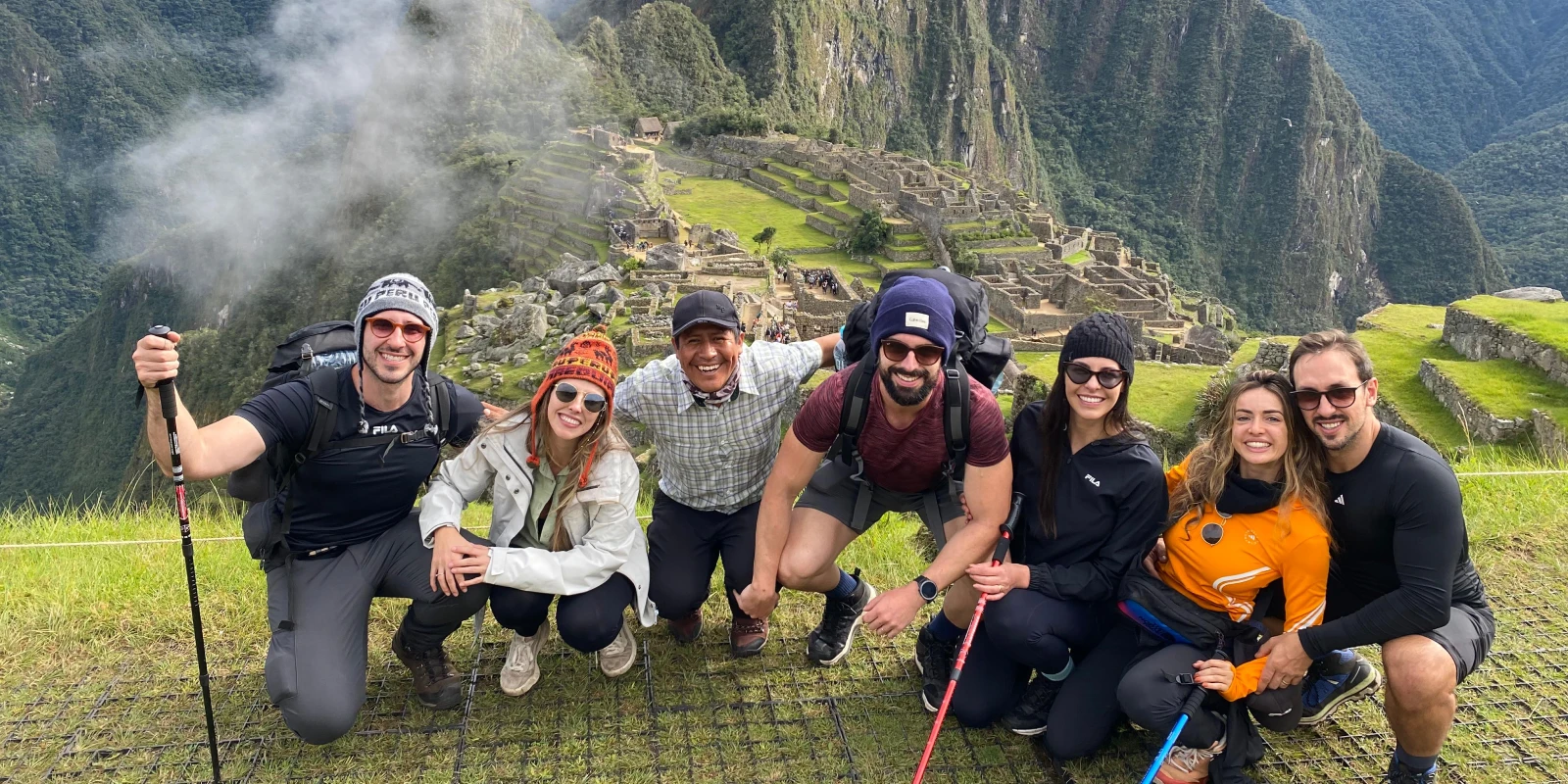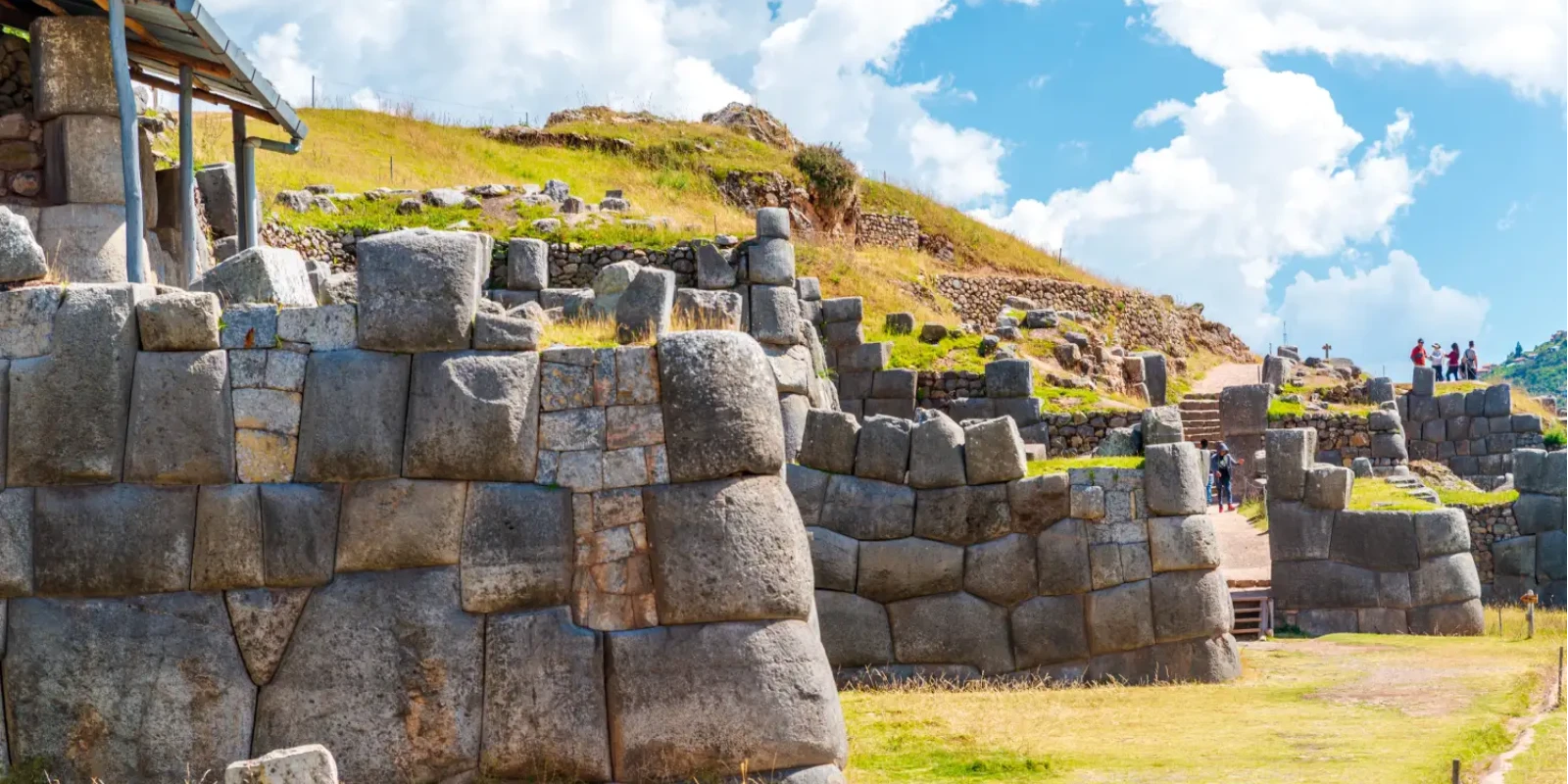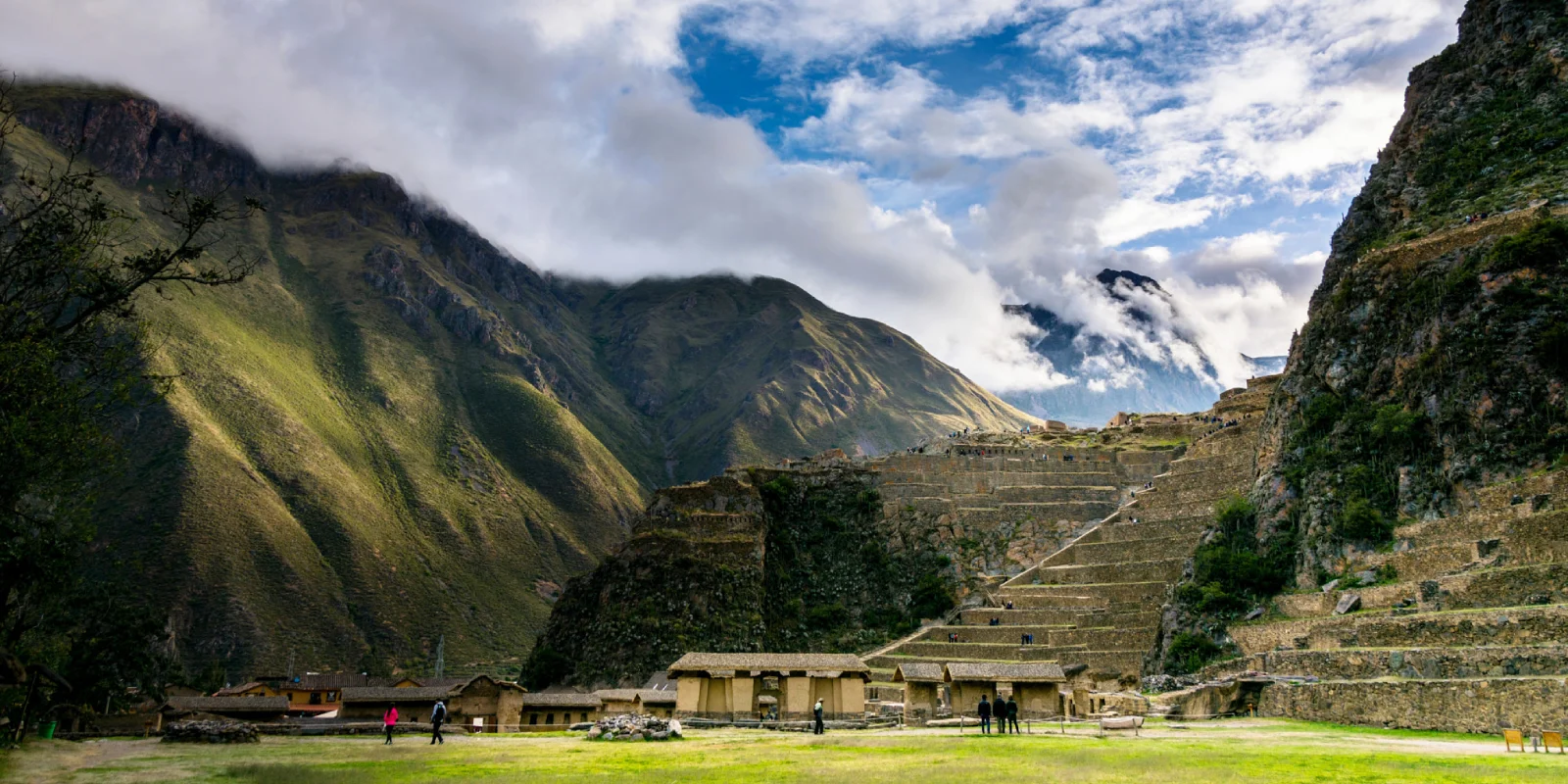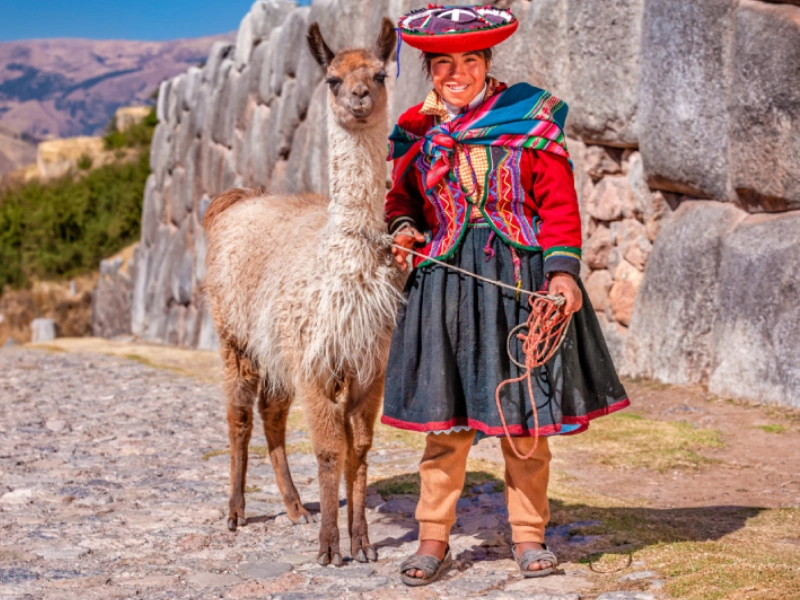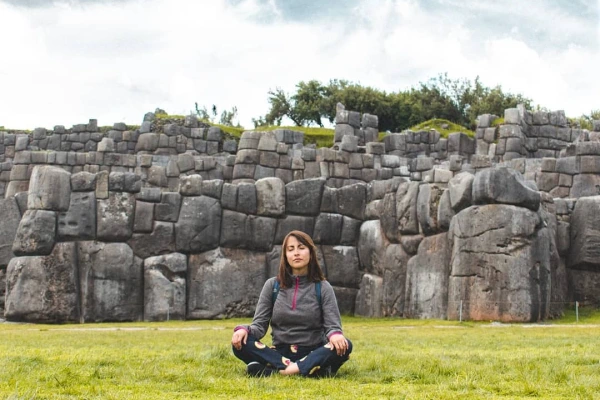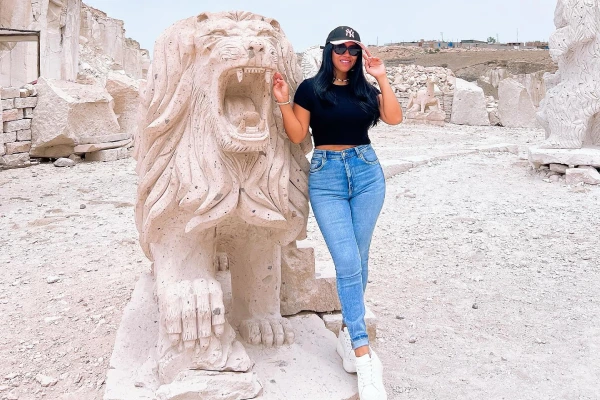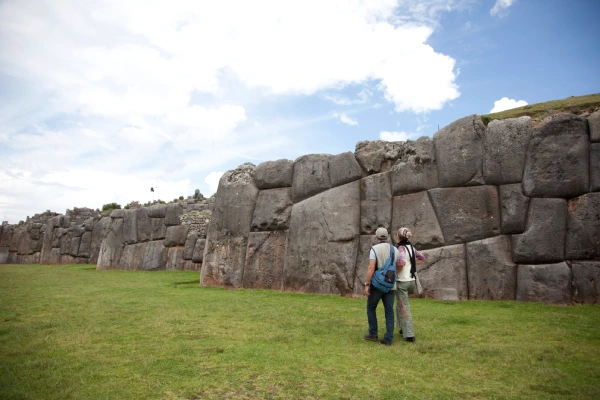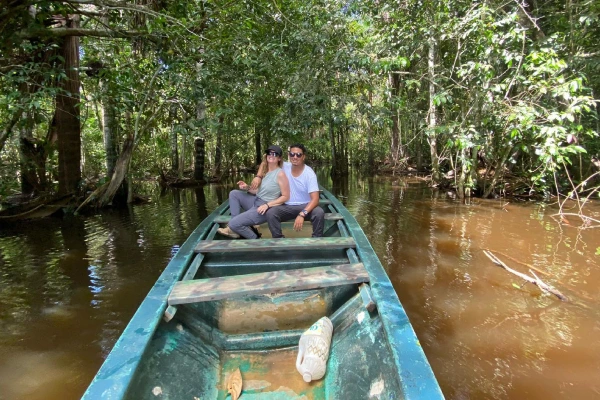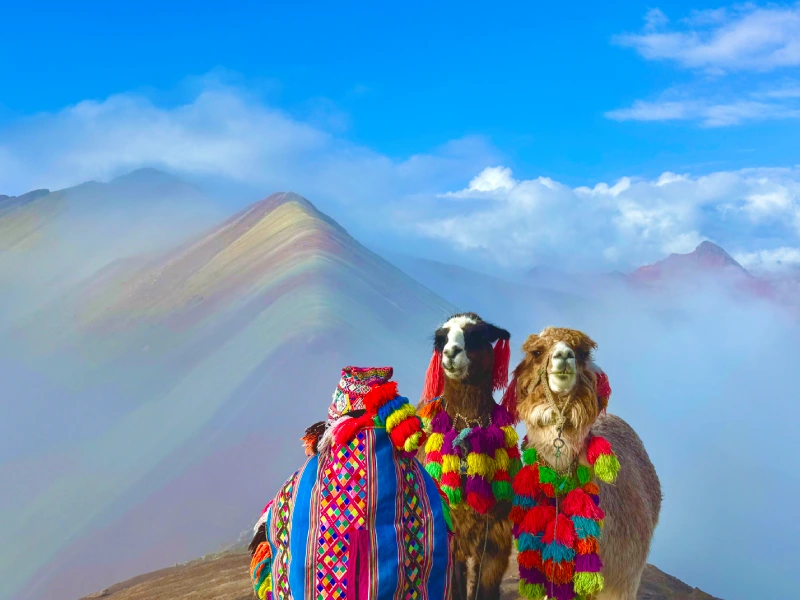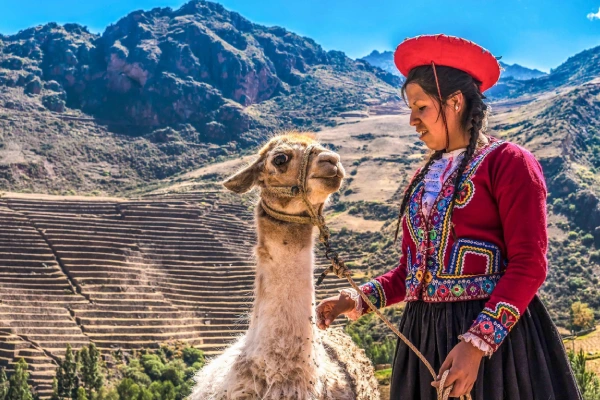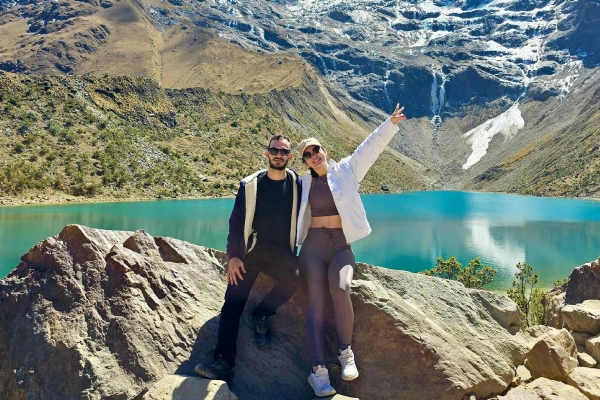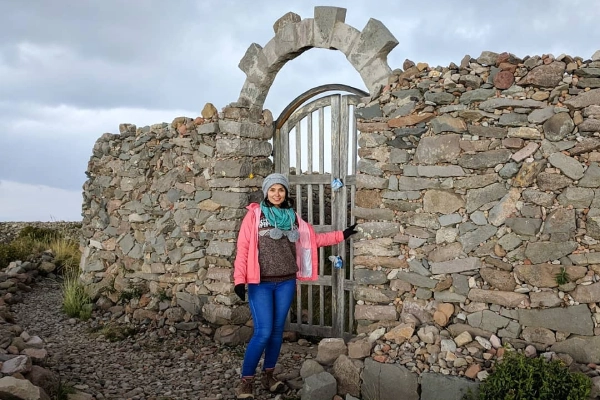Welcome to the most comprehensive tour of Peru, an extraordinary journey that fuses archaeology, nature, and living traditions into a single premium package.
Our 10-day itinerary will transport you from the Pacific shores of Lima to the mystical heights of the Peruvian Andes, revealing the best-kept secrets of the legendary Inca Empire and the natural wonders that have made Peru one of Latin America’s most fascinating tourist destinations.
This Lima-Puno-Cusco tour is designed for discerning travelers seeking an authentic and in-depth experience, combining must-see sites such as Machu Picchu and Lake Titicaca with exclusive cultural experiences and dreamy natural panoramas that only local experts can reveal.
Perfectly Balanced Itinerary
Our program is carefully structured to offer you:
- Gradual acclimatization to the Andean altitude
- Ideal balance between history, culture, and nature
- Comfortable pace that prevents exhaustion.
- Flexible time for personal exploration
- mmersive experiences with local communities
Summary
Day 1: Welcome To Lima
- Reception at the airport and transfer to the hotel
- Free time to rest
- Accommodation in Lima.
Day 2: Lima – City Tour
- Breakfast at the hotel
- 4-hour tour of Lima
- Ancestral Lima: Huaca Pucllana, Parque del Amor, and El Olivar Park
- Colonial Lima: Historic Center, Plaza Mayor, Cathedral, San Francisco Convent, and Catacombs
- Accommodation in Lima.
Day 3: Lima – Puno
- Breakfast at the hotel
- Transfer to the airport for a flight to Juliaca
- Reception and transfer to Puno (45 min)
- Free afternoon to acclimatize to the altitude (3,800 masl)
- Accommodation in Puno.
Day 4: Lake Titicaca – Uros And Taquile Floating Islands
- Breakfast at the hotel
- Excursion to Lake Titicaca (full day)
- Visit to the Uros Floating Islands
- Sail to Taquile Island and typical lunch
- Return to Puno in the afternoon
- Accommodation in Puno.
Day 5: Puno – Route Of The Sun – Cusco
- Breakfast at the hotel
- Panoramic tour bus ride to Cusco
- Stops at: Pukara, La Raya (highest point, 4,335 meters above sea level), Sicuani (lunch)
- Visit to the Temple of Raqchi and the Andahuaylillas chapel
- Arrival in Cusco and transfer to the hotel
- Overnight in Cusco.
Day 6: Cusco – City Tour And Archaeological Centers
- Breakfast at the hotel
- Free morning for altitude acclimatization (3,400 meters above sea level)
- Afternoon city tour: Koricancha (Temple of the Sun)
- Visit to the archaeological sites: Sacsayhuamán, Qenqo, Pucapucara, and Tambomachay
- Overnight in Cusco.
Day 7: Cusco – Sacred Valley Of The Incas – Aguas Calientes
- Breakfast at the hotel
- Excursion to the Sacred Valley: Pisaq (artisanal market and archaeological site)
- Tour of Urubamba and buffet lunch in restaurant
- Visit to the Ollantaytambo fortress
- Train ride to Aguas Calientes (1 hour and 45 minutes)
- Overnight in Aguas Calientes.
Day 8: Cusco – Machu Picchu – Cusco
- Breakfast at the hotel
- Bus ride to Machu Picchu
- Guided tour of the World Wonder
- Lunch in Aguas Calientes
- Return by train to Ollantaytambo and transfer to Cusco
- Overnight in Cusco.
Day 9: Cusco – Rainbow Mountain (vininunca)
- Excursion to the Rainbow Mountain (Vinicunca)
- Early departure to Cusipata
- Approximately 2-hour hike (altitude 5,200 meters above sea level)
- Lunch – Boxed lunch
- Return to Cusco in the afternoon
- Overnight in Cusco.
Day 10: Cusco – Lima – Next Destination
- Breakfast at the hotel
- Transfer to the airport for a flight to Lima
- Connecting to an international flight (or optional extension).
Itinerary
Day 1: Welcome To The City Of Kings | Lima
Your Peruvian adventure begins today. Upon arrival at Jorge Chávez International Airport, our representative will warmly welcome you and comfortably transfer you to your selected hotel in Lima, historically known as the “City of Kings.”
Experience of the Day:
- Personalized assistance at the airport
- Private hotel-airport transfer
- Informational briefing about your upcoming Peruvian adventure
Take advantage of this free afternoon to rest from your trip or explore the surroundings of your hotel. For the most enthusiastic, we recommend a first taste of Peruvian cuisine, renowned worldwide, at one of the nearby restaurants.
| Accommodation: Selected hotel in Lima | Includes: Transportation, Transfer |
Day 2: Exploring The Peruvian Capital | Lima City Tour
Breakfast at the hotel.
After a hearty breakfast, get ready to discover the contrasts of Lima, a city where the pre-Columbian past, colonial heritage, and modernity harmoniously coexist.
Morning Experience:
- Pickup from your hotel at 9:00 am
- Explore the bohemian district of Barranco with its colorful Republican houses
- Visit modern Miraflores and its spectacular seafront.
Afternoon Experience:
- Discover Huaca Pucllana, an impressive pre-Hispanic adobe pyramid from the 4th century AD
- Stroll through the romantic Parque del Amor, with its iconic “The Kiss” sculpture and panoramic views of the Pacific Ocean.
- Tour of the elegant San Isidro district and its centuries-old El Olivar Park
Colonial Lima:
- Immerse yourself in Lima’s Historic Center (a UNESCO World Heritage Site).
- Contemplate the majestic Plaza Mayor surrounded by the Cathedral, the Government Palace, and the Municipal Palace
- Visit the Convent of San Francisco and explore its mysterious catacombs and former colonial cemetery
At the end of the tour, you can return to your hotel or stay at the modern Larcomar shopping center with stunning ocean views.
| Accommodation: Selected hotel in Lima | Includes: Transportation, Guide, Tickets |
Day 3: From Coast To Highlands | Lima – Puno
Breakfast at the hotel.
Today you will begin your ascent into the Andean highlands. After breakfast, transfer to the airport for your flight to Juliaca.
Experience of the day:
- Flight from Lima to Juliaca (approximately 1 hour 40 minutes)
- Reception at Juliaca airport
- Panoramic transfer to Puno (45 minutes), bordering the mythical Lake Titicaca
- Free afternoon for gradual acclimatization to the altitude (3,800 meters above sea level)
Recommendations for acclimatization:
- Maintain hydration
- Light food
- Coca tea (traditional Andean remedy)
- Moderate rest
| Accommodation: Selected hotel in Puno | Includes: Transportation, Transfer. |
Day 4: Sailing The Sacred Lake | Floating Islands of The Uros and Taquile
Breakfast at the hotel.
Get ready for an unforgettable day on Lake Titicaca, the highest navigable lake in the world and the birthplace of ancient Andean civilizations.
Morning Experience:
- Early departure to Puno’s lake port
- Sail to the stunning Uros Floating Islands
- Cultural encounter with the Uros community, who maintain the ancient tradition of building artificial islands with totora reeds
- Demonstration of their construction techniques and ancestral lifestyle
Afternoon Experience:
- Continue sailing to Taquile Island, known for its exceptional textiles (Intangible Cultural Heritage of Humanity)
- Gentle walk along pre-Incan trails with 360° panoramic views of the lake
- Traditional lunch prepared with local ingredients
- Interaction with Taquile residents, master weavers.
| Accommodation: Selected hotel in Puno | Includes: Motorboat, Guide, Tickets, Lunch. |
Dia 5 – Sun Route – Puno – Cusco
Breakfast at the hotel.
Today you will embark on a fascinating overland journey through the Andean highlands, following the historic Route of the Sun, which connects two of the most important regions of the ancient Inca Empire.
Experience of the Day:
- Early departure on a first-class tourist bus
- First stop at Pukara, an important pre-Inca ceremonial center with its interesting stone museum
- Ascent to La Raya (4,335 meters above sea level), the highest point of the tour with breathtaking views of the Andes
- Buffet lunch in Sicuani with traditional cuisine
- Visit to the majestic Temple of Raqchi, dedicated to the creator god Wiracocha
- Stop in Andahuaylillas to visit its “Sistine Chapel of the Americas,” a jewel of Andean Baroque
Arrival in Cusco at dusk, the former capital of the Inca Empire and current Historic Capital of Peru. Transfer to your selected hotel.
| Accommodation: Selected hotel in Cusco | Includes: Transportation, Guide, Tickets, Lunch. |
Day 6: The Imperial Capital | Cusco City Tour And Archaeological Centers
Breakfast at the hotel.
Spend the morning acclimatizing in the historic city of Cusco (3,400 meters above sea level). Enjoy a nutritious breakfast and prepare for an afternoon of cultural discoveries.
Afternoon Experience:
- Start the city tour by visiting Qoricancha (Temple of the Sun), the most important sanctuary of the Inca Empire, upon which the Convent of Santo Domingo was built.
- Explore the imposing Cusco Cathedral with its priceless collection of colonial art and Andean Baroque architecture.
- Climb to the famous Sacsayhuamán fortress, an impressive megalithic structure with enormous, perfectly assembled stone blocks.
- Visit the Qenqo ceremonial center, an ancient temple where rituals were performed in honor of the sun, moon, and stars.
- Tour of Pucapucara, a strategic checkpoint on the Inca trails.
- End at Tambomachay, considered the “Bath of the Inca,” a ceremonial hydraulic complex dedicated to the worship of water.
Return to the hotel and the rest of the afternoon free to discover Cusco’s nightlife.
| Accommodation: Selected hotel in Cusco | Includes: Transportation, Guide, Tickets. |
Day 7: The Sacred Valley Of The Incas | Pisaq – Urubamba – Ollantaytambo
Breakfast at the hotel.
Today you will delve into the mystical Sacred Valley of the Incas, one of the most fertile and beautiful landscapes in the Andes, framed by the majestic Urubamba River.
Morning Experience:
- Departure to Pisac, an important archaeological center with impressive agricultural terraces.
- Visit the colorful artisan market, one of the most authentic in the region.
- Opportunity to purchase traditional textiles, ceramics, and silver jewelry.
Afternoon Experience:
- Buffet lunch in Urubamba with specialties of Andean cuisine.
- Visit the imposing fortress of Ollantaytambo, an exceptional example of Inca urban planning.
- Exploration of its cobblestone streets, water channels, and buildings that have been inhabited since the 13th century.
At the indicated time, train journey to Aguas Calientes.
This tour will allow you to understand the advanced agricultural, architectural, and hydraulic engineering developed by the Inca civilization.
| Accommodation: Selected hotel in Aguas Calientes | Includes: Transportation, Guide, Lunch, Tickets |
Day 8: The Lost City Of The Incas | Machu Picchu
Breakfast at the hotel.
Get ready for the highlight of your trip: a visit to one of the New Seven Wonders of the World and a World Heritage Site.
Morning Experience:
- Breakfast at the hotel
- Ascent by eco-friendly bus along a zigzagging path to the entrance of the citadel
Machu Picchu Experience:
- Guided tour of the main sections of this masterpiece of Inca architecture
- Visit to the Temple of the Sun, Intihuatana (sundial), Temple of the Three Windows, Sacred Plaza, and other ceremonial sites
- Free time for personal exploration and spiritual connection with this historic sanctuary
- Unique photo opportunity with the citadel and Huayna Picchu in the background
Optional: Visit to Machu Picchu Mountain or Huayna Picchu (subject to availability) or an additional $65.00 per ticket.
Afternoon Experience:
- Descent to Aguas Calientes
- Lunch at a local restaurant
- Return by train to Ollantaytambo and bus transfer to Cusco
| Accommodation: Selected hotel in Cusco | Includes: Transportation, Train, Bus, Guide, Tickets, Lunch. |
Day 9: The Petrified Rainbow | Mountain Of Seven Colors
Breakfast on the road
The adventure continues today with an excursion to one of the most striking and photographed natural treasures of the Peruvian Andes: the famous Rainbow Mountain (Vinicunca).
Morning Experience:
- Very early departure (4:30 am) to the Cusipata region
- Light breakfast in a local community
- Start of the acclimatization hike (approximately 2 hours)
- Gradual ascent to 5,200 meters above sea level.
Summit Experience:
- Contemplation of the spectacular geological phenomenon with its multicolored mineral bands.
- Cusco
- Time for photographs and connection with the energy of the Apus (sacred mountains).
Afternoon Experience:
- Descent along alternative trails with different views
- Lunch en route
- Return to Cusco (approximately 3 hours of travel)
- Free afternoon to rest or do some last-minute shopping
| Accommodation: Selected hotel in Cusco | Includes: Transportation, Guide, Tickets, Lunch. |
Day 10: Farewell To The Land Of The Incas | Cusco – Lima – International Destination
Breakfast at the hotel.
The time has come to say goodbye to this ancient land full of magic and mysteries. Day Experience:
- Breakfast at the hotel (depending on flight schedule)
- Transfer to Cusco airport
- Flight to Lima (approximately 1 hour)
- Assistance with connecting flights or optional extension.
| Accommodation: None. | Includes: Transportation, Transfer. |
Important:
The tour schedule will be confirmed at the destination.
Included
Services Included:
- 9 nights of accommodation in selected hotels (3 nights in Lima, 2 nights in Puno, 4 nights in Cusco).
- Daily breakfasts at hotels
- 4 lunches as per itinerary.
- All airport-hotel-airport transfers
- Land and water transportation in modern and safe vehicles
- Train tickets to Machu Picchu on Expedition (Peru Rail) or Voyager (Inca Rail) services
- Entrance fees to all sites mentioned in the itinerary
- Professional bilingual guides (Spanish/English) with extensive experience
- Permanent assistance throughout the tour
No Included:
- International flights
- Domestic flights Lima-Juliaca and Cusco-Lima
- Airport taxes
- Meals not mentioned in the program
- Personal expenses and additional services
- Travel insurance (highly recommended)
Contacts
General Conditions
- All rates are in US dollars (optional for currency exchange) and are programmed per person.
- The rates valid for Peruvians only include VAT.
- All our rates are subject to availability and changes.
- Children under 02 years and 11 months are considered INF (babies), do not pay any service and do not have the right to food, bed or seat on the tours.
- DCC (child) is considered a child from 03 to 10 years and 11 months, has a special rate and shares a room with parents.
- Children over 11 years old considered adults.
- Minors must travel with an identity document.
- Rates do not apply to holidays, Easter, long weekends, national holidays, Christmas or New Years.
More Information
What does the 10-Day Peru package include?
Our all-inclusive package includes: airport transfers, 9 nights of accommodation (2 in Lima, 2 in Puno, 4 in Cusco, 1 in Aguas Calientes), all breakfasts, lunches on days 2, 4, 5, 7, 8, and 9, city tours in Lima, Puno, and Cusco, an excursion to Lake Titicaca with visits to the Uros and Taquile Islands, the Sun Route from Puno to Cusco with archaeological stops, a tour of the Sacred Valley (Pisac and Ollantaytambo), the train to Aguas Calientes, entrance and guided tour of Machu Picchu, a hike to the Rainbow Mountain (Vinicunca), professional bilingual guides, private transportation, and all entrance fees. Everything is designed so you can enjoy yourself worry-free.
Where does the tour start?
The tour begins with pickup at the Jorge Chávez International Airport in Lima. A Dreamy Tours representative will be waiting for you with a sign with your name on it to take you directly to your hotel. You don’t need to arrange anything; from that moment on, you are in our care. The first day is free for you to rest and acclimatize before the adventure begins.
What will we see on the Lima city tour?
The Lima Peru city tour combines ancient history, colonial heritage, and modernity:
- Barranco: A bohemian district with colorful houses.
- Miraflores: The boardwalk, Love Park, and views of the Pacific Ocean.
- Huaca Pucllana: A pre-Hispanic pyramid from the 4th century AD.
- Historic Center: Main Square, Cathedral, Government Palace.
- San Francisco Convent: Colonial library and catacombs.
It is the perfect introduction to Peru’s cultural diversity.
Why is Lima called the “City of Kings”?
Because it was founded by the Spanish conquistador Francisco Pizarro on January 6, 1535, which is Three Kings’ Day. Since then, it has been known as the “City of Kings.” This historical name is still used in official and tourist documents. Today it is the country’s largest capital and a world culinary center.
What will we eat during the tour?
We offer typical dishes from each region:
- In Lima: Ceviche, causa, ají de gallina.
- In Puno: Caldo de cabeza de oveja (sheep head soup), piti, quinoa.
- In Cusco: Fried trout, rocoto relleno, lamb.
All ingredients are fresh and local. If you are vegetarian or have allergies, please let us know in advance.
What is the flight from Lima to Juliaca like?
The flight lasts approximately 1 hour and 40 minutes. We fly over part of the coast and the Andes, with impressive views of mountains and valleys. Upon arrival in Juliaca (12,552 ft. above sea level), you will have free time to acclimatize. We recommend hydration, coca tea, and light rest.
Why is it important to acclimatize in Puno?
Because Puno is at 12,467 feet above sea level, one of the highest points on the tour. Many travelers experience dizziness or fatigue. Acclimatizing helps prevent altitude sickness. We recommend resting, drinking plenty of water, drinking coca tea, and avoiding alcohol. This tour takes that into account: the first day in Puno is light, ideal for adapting.
What are the Floating Islands of the Uros?
The Floating Islands of the Uros are artificial communities built with totora, an aquatic plant. Their houses, furniture, and boats are also made of totora. The inhabitants maintain ancestral traditions and live mainly from fishing and tourism. Respecting their customs is essential during the visit.
What will we see on Taquile Island?
Taquile Island is famous for its unique textiles, recognized by UNESCO as an Intangible Cultural Heritage of Humanity. There you will see:
- Men who have been weaving since they were 8 years old.
- Women who spin using ancestral techniques.
- Designs that tell Andean stories.
You will also enjoy a local lunch and panoramic views of the lake while walking along pre-Inca paths.
What animals can I see on Lake Titicaca?
It’s common to see:
- Giant grebes (endemic birds).
- Andean flamingos in brackish areas.
- Vicuñas on nearby islands.
- Diverse birdlife in wetlands.
Additionally, you will see llamas and alpacas grazing near the communities. All are protected. Observe from a distance and do not feed them.
What is the Sun Route from Puno to Cusco?
The Sun Route from Cusco to Puno is a historic overland journey that connects two important centers of the Inca Empire. During the trip we visit:
- Pukara: A pre-Inca ceremonial center with a lithic museum.
- La Raya (14,222 ft.): The highest point of the journey.
- Raqchi: Temple dedicated to the god Wiracocha.
- Andahuaylillas: Known as the “Sistine Chapel of America” for its Baroque art.
It is a journey full of Andean landscapes, culture, and spiritual energy.
What will we see on the Cusco city tour?
We will visit the most important sites:
- Qorikancha (Temple of the Sun): The most sacred Inca sanctuary.
- Cusco Cathedral: With paintings from the Cusco School.
- Sacsayhuamán: A megalithic fortress with perfectly assembled stones.
- Q’enqo, Pucapucara, and Tambomachay: Inca ceremonial centers.
It is a perfect combination of history, engineering, and spiritual energy.
What is the Sacred Valley of the Incas?
The Sacred Valley of the Incas was the agricultural and ceremonial heart of the Inca Empire. There we visit:
- Pisac: With impressive ruins and a traditional artisan market.
- Ollantaytambo: A still-inhabited Inca town with pre-Hispanic streets and a monumental fortress.
Additionally, we pass through Urubamba, with unique landscapes and authentic Andean life.
Does it include lunch in the Sacred Valley?
Yes, we include an Andean buffet lunch at a local restaurant. You will taste dishes like fried trout, rocoto relleno, quinoa with cheese, and native potatoes. Everything is made with fresh ingredients from the valley. If you are vegetarian, vegan, or have allergies, please let us know in advance.
How do we get from Ollantaytambo to Aguas Calientes?
We take the train to Aguas Calientes (Machu Picchu) from the Ollantaytambo station to Aguas Calientes; the journey lasts approximately 1 hour and 45 minutes. The route is scenic, with views of the Urubamba River, mountains, and jungle vegetation. You travel comfortably seated, with large windows. Arrival is scheduled for the afternoon.
Where will we sleep before visiting Machu Picchu?
We spend the night at a selected hotel in Aguas Calientes, the base town for visiting Machu Picchu. All hotels are close to the train station and the bus terminal. You will have a private bathroom, hot water, and basic Wi-Fi. It’s ideal for resting and preparing for the big day ahead.
What time do we arrive at Machu Picchu?
We leave Aguas Calientes very early, around 5:30 a.m., to catch the first bus. We arrive at the entrance to Machu Picchu around 6:00 a.m., right at sunrise. This allows us to enjoy the sunrise over the ruins, when the mist lifts and the sun’s rays slowly illuminate the terraces. Being among the first helps avoid the crowds.
What will we see on the guided tour of Machu Picchu?
With a certified guide, you will tour the key sectors for 2 hours:
- Temple of the Sun
- Intihuatana (Sun Clock)
- Temple of the Three Windows
- Sacred Plaza
- Residential and ceremonial areas
You will learn about Inca astronomy, engineering, and daily life. Afterwards, you will have free time to explore on your own.
Does it include entrance to Huayna Picchu or Machu Picchu Mountain?
No, these entrances are not included, but we can arrange them for an additional $65 USD.
- Huayna Picchu: A demanding hike with panoramic views; only 400 people per day.
- Machu Picchu Mountain: A longer, less steep hike, ideal for those seeking a more complete experience.
You must reserve these months in advance due to limited availability.
What is the Mountain of Seven Colors?
The Mountain of Seven Colors (Vinicunca) is famous for its vibrant colored stripes: red, purple, yellow, green, and beige. These colors were formed millions of years ago by mineral sedimentation. It is located at 5,200 meters (17,060 ft) above sea level and is considered sacred by the Andean communities. Today, it is one of the most photographed destinations in Peru.
How long is the hike to Vinicunca?
The ascent takes approximately 2 hours from the starting point. It is a moderate hike with a constant incline. Once you arrive, you will have time for photos and contemplation. The descent is faster. Total time: 3–4 hours. We recommend trekking poles if you have sensitive knees.
Is there electricity and cell phone service?
Yes, all hotels have electricity for charging devices. Cell phone service is good in Lima, Cusco, and Puno, but it can be weak in rural areas like Raqchi or Pisac. We recommend unplugging a bit. However, the guide will have emergency communication.
What clothes should I bring for the 10-day Peru tour?
You need functional clothing:
- Thermal layers (for Cusco and Puno)
- Waterproof jacket (it can rain)
- Comfortable pants or hiking pants
- Sneakers or shoes with good grip
- Hat, sunglasses, and sunscreen
- Swimsuit (in case you want to swim or get wet)
Also bring repellent, a power bank, and a small backpack.
What happens if I get sick or can’t continue?
Our guides carry a basic first-aid kit, portable oxygen, and an emergency radio. If someone has altitude sickness, an injury, or fatigue, we activate the rescue plan: rapid transport to Cusco or Juliaca. Everyone must have travel insurance. Most people complete the tour without any problems, but we are prepared.
Are there budget-friendly options for this tour?
Yes, there are more affordable all-inclusive Peru tour packages, especially during the low season. You can save money by joining large groups or choosing regular departure dates. But be careful: avoid deals that are too cheap, as they may omit insurance, entrance tickets, or quality transportation. You get what you pay for.
What documents do I need for the tour?
You only need your original passport and your reservation. If you are a student, bring your international ISIC card for a possible discount. Everything must match your name exactly. Photos or foreign identity cards are not accepted.
What tips do you have to avoid altitude sickness?
Here are our tips:
- Acclimatize for 1–2 days in Cusco or Puno beforehand.
- Stay very hydrated with water and coca tea.
- Use sunscreen (the sun’s radiation is strong).
- Do not drink alcohol for the first few days.
- Get plenty of rest at night.
- Listen to your body: if you feel unwell, tell your guide immediately.
What other places can I visit near Cusco or Puno?
You can extend your trip to:
- Maras and Moray (Cusco): Salt mines and an Inca agricultural laboratory.
- Chinchero (Cusco): A textile town with traditional weaving.
- Amantaní (Lake Titicaca): A community homestay experience.
We can help you organize extensions based on your available time.
How do I book the 10-day Lima, Puno, Cusco tour?
It’s very easy: contact us via WhatsApp, email, or the web form. We will send you availability, prices, and the steps to book. We need your full name, passport number, date of birth, and travel insurance details. Once confirmed, you will receive a voucher and all instructions. Book in advance!
Why choose this 10-day tour of Peru?
Because it combines the best of the country: culture, nature, gastronomy, and adventure. You don’t just visit Machu Picchu; you also get to know Lima, Lake Titicaca, the Route of the Sun, the Sacred Valley, and the majestic Vinicunca. It’s ideal for those who want to see more, feel more, and remember it forever. It’s well-organized, safe, and offers unforgettable views.
Price
How Much?
We have price alternatives that accommodate all budgets, prices per person, expressed in US Dollars.
Make your quotes and reservations by email [email protected], you can also communicate with one of our sales executives at the telephones detailed below, we will be happy to assist you.
- Phone – WhatsApp: +51 969 787 221
- Phone – WhatsApp: +51 986 994 218
How to Book the Tour?
To start the reservation process, please send us the following information:
- Name and surname:
- Passport number:
- Nationality:
- Date of Birth:
- Phone:
- Very important – We need the address and information about the hotel that you are staying at, in the city of Cusco, to be able to pick you up at the time when the tour starts
To confirm reservations it is required to pay 50% in advance and the other 50% can be paid upon arrival at your destination.
Payment Methods
- IZIPAY
- PAYPAL
- WESTER UNION
- MONEYGRAM
- TRANSFER TO OUR BANK ACCOUNT PERU

